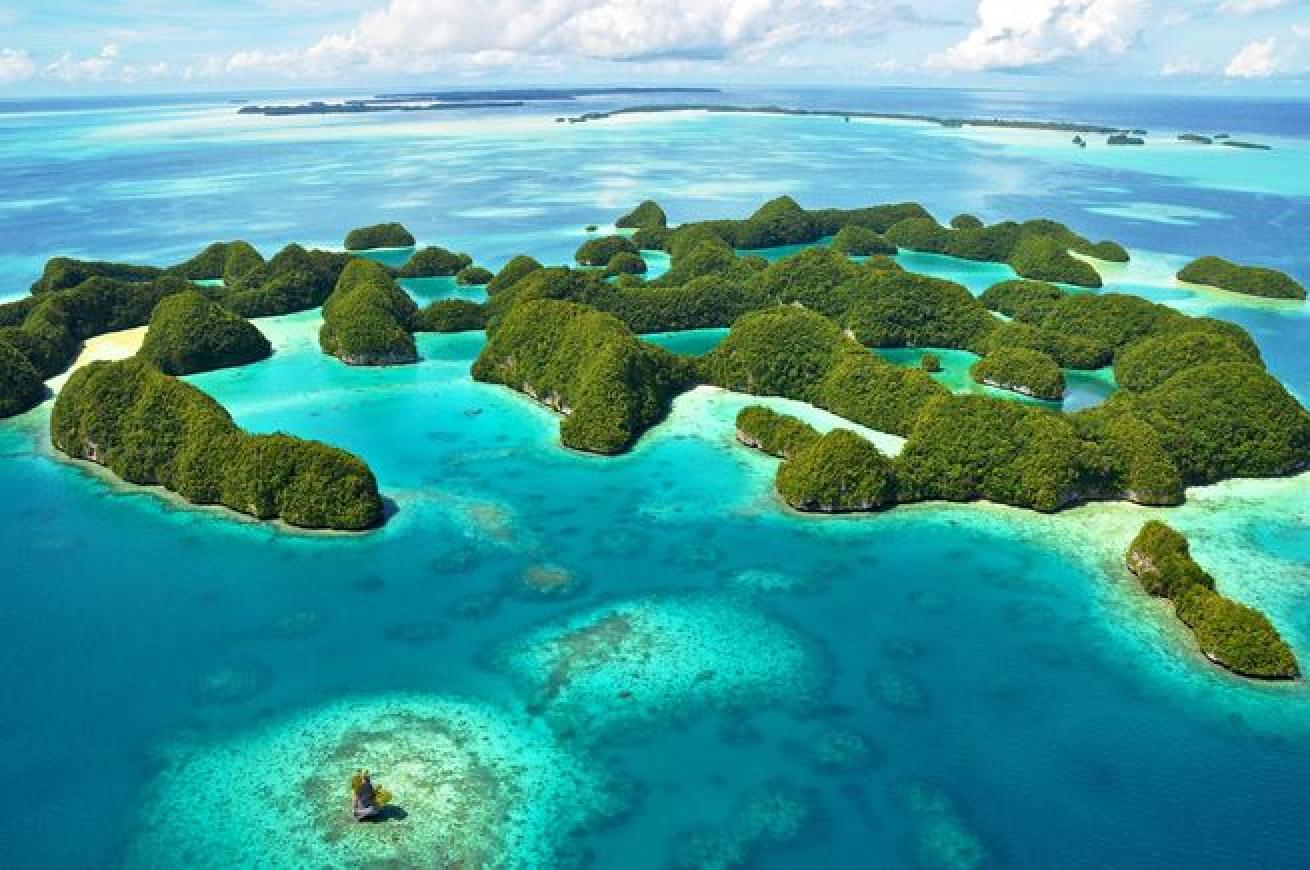Palau
Anguilla's turquoise waters boast seven marine parks: Dog Island, Prickley Pear, Seal Island Reef System, Little Bay, Sandy Island, Shoal Bay Harbour Reef System and Stoney Bay Marine Park. Dive sites include wreck dives, shore dives, mini wall dives, night dives and heritage diving. Anguilla is known for its intentionally sunk shipwrecks. The island is home to a truly unique attraction, a 960-ton Spanish galleon, El Buen Consejo, that rests on the ocean floor with its cannons and cargo serving as a silent testament to the Caribbean's turbulent past. Anguilla also boasts a healthy double reef system, where a wide variety of corals flourish.
Weather: About 80 degrees year-round.
Average Water Temp: Mid-80Fs in summer in the north, dropping to mid-70Fs in winter. Dive season is year-round.
Average Visibility: 100-plus feet.
Travel Savvy: A passport and onward or return ticket is required. Anguilla is 20 minutes north from French St. Martin by ferry. There are a number of options available for getting to the island. Visitors can fly directly into Anguilla's Wallblake Airport from Puerto Rico via American Eagle/American Airlines and LIAT, or opt to fly directly to St. Maarten, Antigua, St. Thomas or St. Kitts for easy transfer to Anguilla
Destination Links: www.anguilla-vacation.com and www.ahta.ai.

At the western edge of the Pacific, just a scant 500 miles from the Philippines and Indonesia, lies arguably the most diverse island chain in all of Micronesia. Palau is made up of more than 350 islands, including the mind-blowing, mushroom-like Rock Islands, situated at the rich, biodiverse intersection of the Pacific Ocean and Philippine Sea. Its waters boast more than 1,300 species of fish and more than 800 species of corals and sponges. You'll find myriad dive experiences, including big pelagic encounters, tranquil coral gardens, current-swept drop-offs, and a collection of World War II wrecks that are a major draw in and of themselves.
For land-based divers wanting the best of both worlds, speedy boats zip to most of the major dive sites in under an hour. Most sites are located off some of the most photogenic islands in the world. Live-aboards also ply these waters, focusing on the southwestern section of the barrier reef to keep divers near the most popular sites.
Weather: Tropical and humid with daytime temperatures in the mid- to high 80s. Nighttime temps can drop to the mid- to low 70s.
Average Water Temp: Consistently in the high 70s to mid-80s all year.
Average Visibility: More than 100 feet of vis is not uncommon.
Entry Documents: A passport is recommended for U.S. citizens, but a birth certificate and photo ID are accepted. Each island airport in Micronesia has its own customs and immigration officers. If you plan on visiting several islands on one trip, you will be passing through customs and immigration lines at each stop.










